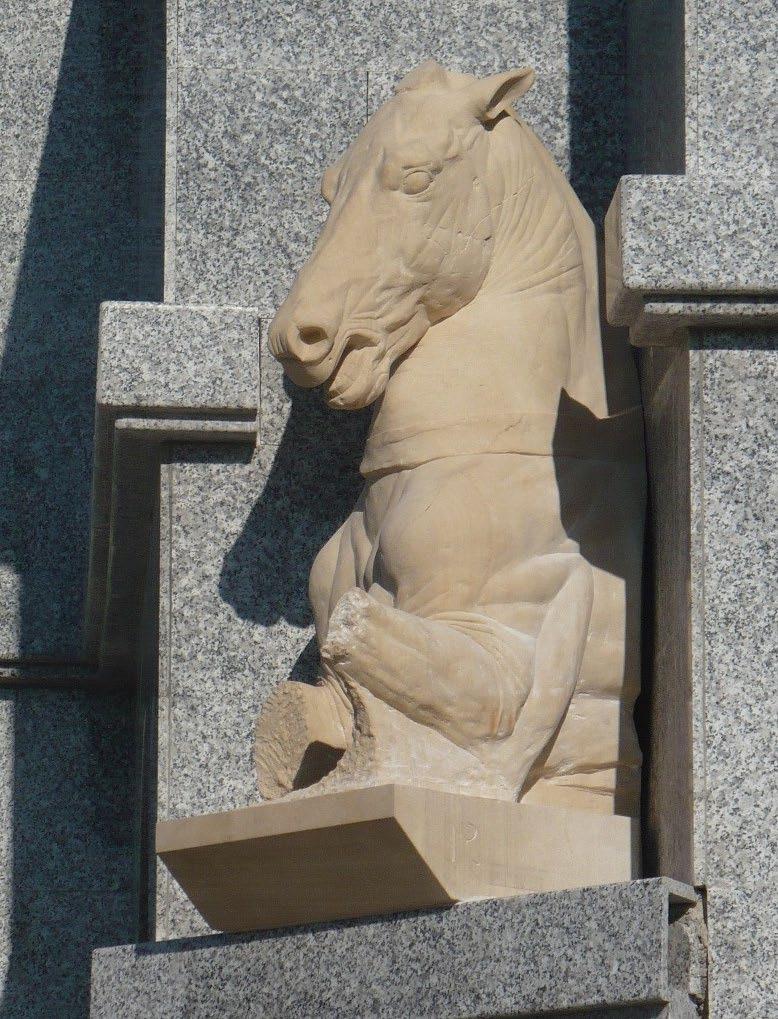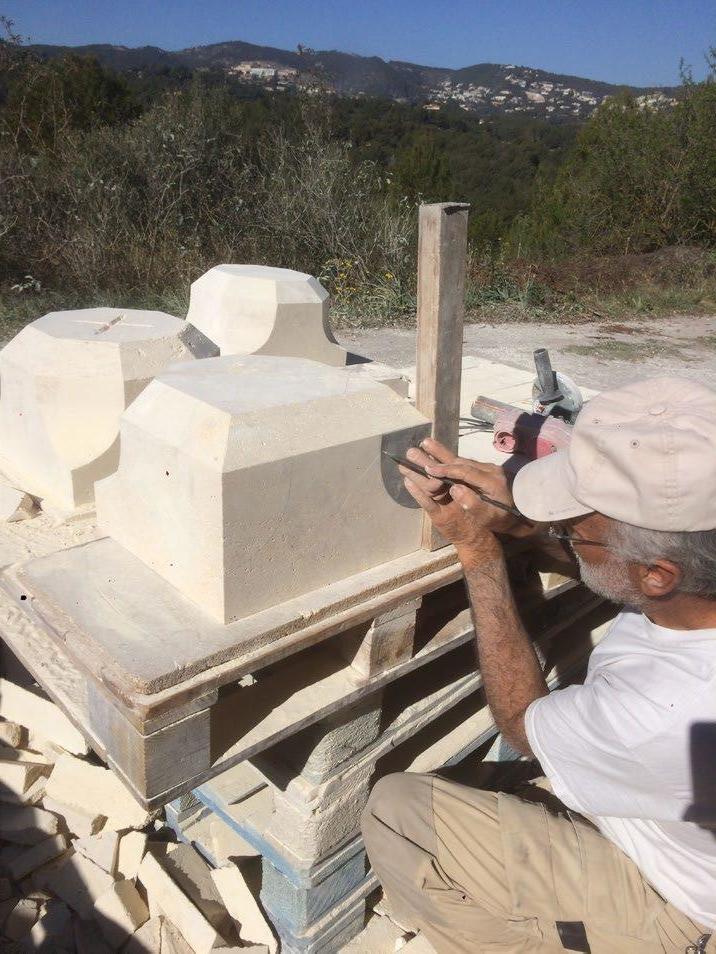
4 minute read
Miquel Ramis
Visitors to La Lonja in Palma can’t fail to be impressed by the interior of this former merchants’ exchange. The slender spiral pillars soar to fuse with the ribs of its lofty vaulted ceiling and look barely strong enough to support the roof’s weight. For master stonemason Miquel Ramis, La Lonja is “the most exciting Gothic building in existence.”
Miquel describes Guillerm Sagrera’s building as the 15th-century equivalent of El Corte Inglés or Harrods, where merchants traded exotic goods from distant countries. Mallorca’s strategic Mediterranean position made Palma wealthy. It had a population of 100,000 – compared to Barcelona’s 40,000. Today Palma has one of the largest medieval quarters in Europe, but many of its old stone-walled buildings have been covered with mortar.
“Our master stonemasons were some of the best,” Miquel says and then laughs. “I am boasting, because I am mallorquín, but I have proof.” It’s in the form of a column’s thickness to height ratio. Miquel explains that columns in all Gothic cathedrals in Europe have the ratio 1:10 or 1:15. The columns in La Seu – Palma’s Cathedral – are built in the ratio of 1:17; La Lonja’s are 1:25. “Only the best master stonemasons would dare to build such slender columns to support the vaults. You have to really know the limits of your stone.”
Miquel Ramis is a man who does.
He’s a third-generation member of a family of stoneworkers, but previously worked in the hotel and tourism sector for 15 years. Looking for something more meaningful, he searched his soul and returned to his family roots – and stone. “To my astonishment, all the people like my father had disappeared. They were retired. The chain of transmission of knowledge was broken.” Rural dwellers of his father’s generation would have had several craft skills, but these have since died out. “We’ve lost connection with our heritage.”
He started a project to recover and teach the traditional craft of stonemasonry, setting up an NGO in 2003 called Artifex. Today, Artifex is based in what would once have been a grand villa, overlooking Palma, where Miquel currently has three apprentices – not one of them from Mallorca. Over the years he’s run courses for students from different countries, including groups from Change Agents UK, the British charity offering environmental education for a sustainable future.
“The self-appointed job of transferring my knowledge to the next generation is getting difficult,” Miquel says. “We live in a world where young people live in a world of immediacy and want everything now.” Even having learnt stonemasonry, it takes many months’ practice to work at the pace of a maestro to earn a realistic hourly rate.
He still hopes for future students: “It’s what keeps me going. I’m 59 now but would like to find more before I’m 64 or 67. Then I’ll just make sculptures and things like that.”
As well as teaching his apprentices and researching the roots and history of stonemasonry, Miquel undertakes restoration work on important buildings and sculptures in Palma and elsewhere in Mallorca. He has
The Master Stonemason
MIQUEL RAMIS


worked on the façade of Palma Cathedral and Patrimonio Nacional commissioned him to do “one of the most exciting projects ever” on a large 14th-century window in the Royal Palace of Almudaina.
He made the statue of Caesar Augustus, in Palma’s La Rambla, to replace the original. A council vehicle had accidentally hit it, knocking it to the ground in 200 pieces. (Miquel also repaired the original, which is now kept in an indoor location). The replacement statue bears his stonemason’s mark in a discreet location – under Augustus’s skirt.
A few years ago, he was invited to Big Sur, California, to make the calculations and templates for a unique logarithmic spiral house constructed from rare Chinese granite and glass. The following year he made and shipped a Mallorcan-style geminated window (measuring 3 metres by 2.5 metres) for a winery in the Napa Valley and travelled there to install it.

His biggest frustration is that he
hasn’t been able to convince the authorities that stonemasonry is a skill that should be fostered for the future. However, he has created a comprehensive 2,600-page online stonemasonry reference for his students and compiled a library of 100K photographs he’s taken of authentic architectural details in stone from all over Mallorca. The latter can be used to inspire clients wanting to enhance their properties with features such as arches, windows, vaults, cobbled paving, fountains, columns, cornices and plaques etc. It’s an impressive legacy.
Miquel undertakes private commissions for contemporary pieces too, such as the logarithmic spiral house – but also sculptures and smaller items. He points out a tactile stone washbasin: “I enjoy these projects, because they’re more organic and different to the precise geometrical work.” For his cobbled paving, he ages each of the stone blocks framing the pebbles. He also restores stonework to its former glory in renovation projects.
Miquel Ramis finds “emotional gratification” working with foreign property owners here. He says his British, German, Scandinavian and North Americans clients appreciate traditional Mallorcan designs and crafts: “They see the difference between pastiche and proper craftsmanship.” His clients often visit his Artifex workshop and many become friends: “They buy not only my stone, but also my stories, part of our heritage, history, and a feeling.”











